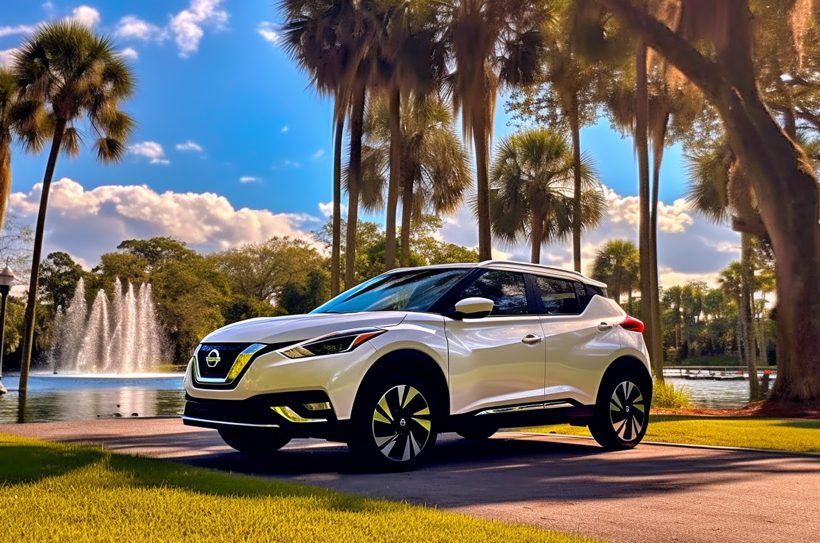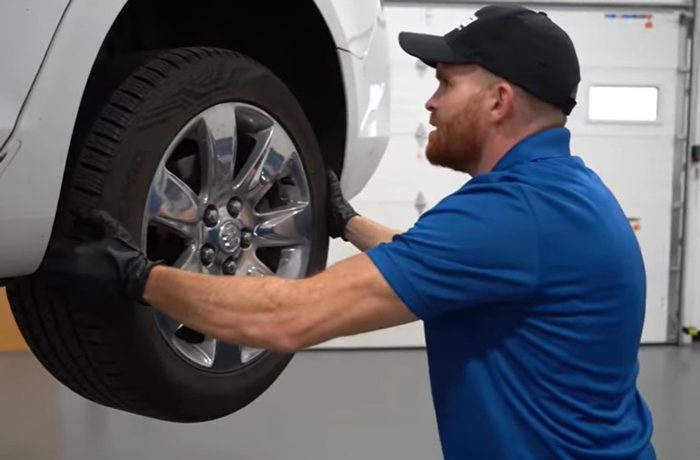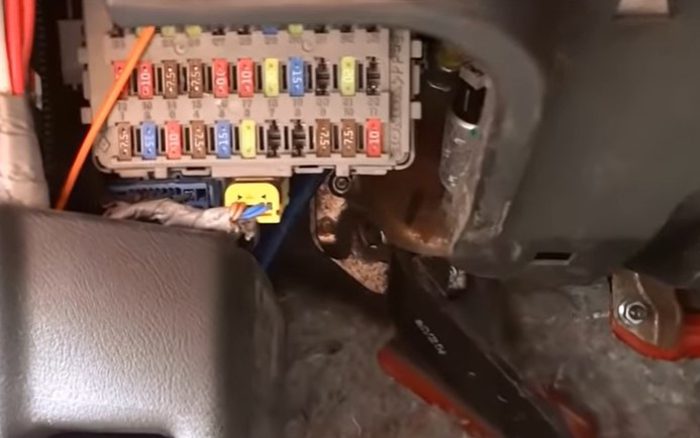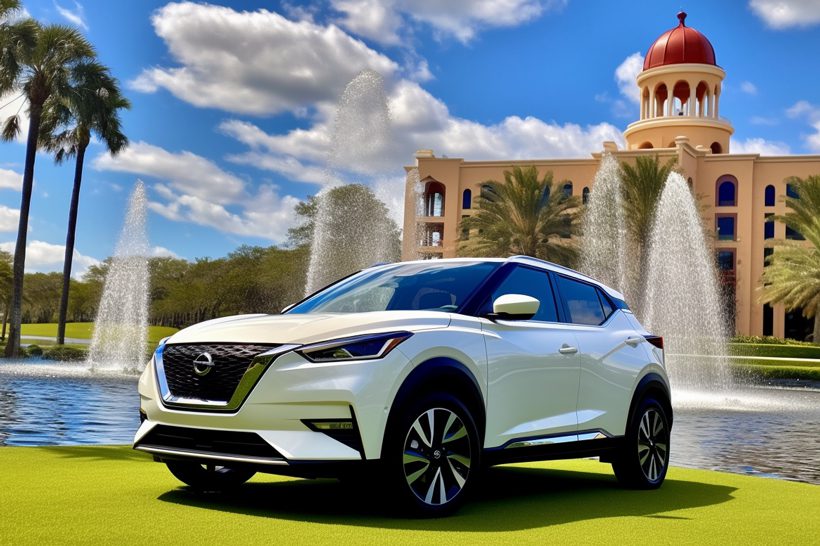ABS Light On After Tire Blowout: (Knowing The Causes And Fixes!)
The ABS light on your dashboard should turn on when you start the car as it self-diagnoses the braking system. The light should turn off after a few seconds as you start driving. However, if your tire blows out, you may observe the light illuminated, indicating a possible issue.
So, why is my ABS light on after the tire blowout? The ABS light turns on when your tire blows out, indicating possible damage to the system connections and malfunctioning hydraulic pump which get damaged due to the magnitude of the tire burst. It may also be due to a blown fuse, low brake fluid, or a damaged ABS tone ring due to the impact of the tire burst.
In this article, we shall review the possible causes for the ABS light turning on and possible fixes. We shall also check whether it is safe to continue driving with the ABS light illuminated.
ABS Light On After Tire Blowout: Quick Overview of Causes And Fixes!

If you need a summary of the causes and possible fixes when the ABS light is on after a tire blowout, here’s a quick overview.
| Cause Of ABS Light On After Tire Burst | Quick Fixes |
|---|---|
| Damaged wire and loose connections | Inspect the connection for any damaged cables and repair or replace them |
| Blown fuse from the tire burst impact disrupting the electrical system | Replace the blown fuse and repair the damaged electrical system |
| Malfunctioning hydraulic pump | Inspect and repair the damaged parts of the hydraulic pump |
| Replace the damaged hydraulic pump and replace it with a new one | |
| Low brake fluid due to damaged brake systems from the tire burst impact | Inspect any leakages in the brake fluid system |
| Top-up with appropriate brake fluid | |
| Damaged ABS tone ring | Remove the damaged ring and replace with a new tone ring |
| Faulty speed sensor | Replace the faulty/bad speed sensor |
ABS Light On After Tire Blowout: Causes And Fixes!
The Anti-lock braking system is distributed to every wheel with cables that are prone to damage and loose connections. When one or more tires blow out while driving, chances are that the anti-lock braking system is damaged due to the impact on the wheel.

You will notice that the ABS light on the dashboard lights up and won’t go off. Let’s look at the main causes of why ABS lights up after a tire blowout and how to fix the issues.
Damaged Wire And Lose Connections
The anti-lock braking system operates under a series of wire connections. These systems relay information from the speed sensor to the Electronic Control Unit (ECU) and to the ABS light on the dashboard. If the connections are damaged or loosely connected, the light on the dashboard remains on, especially after the tire is blown out.
Loose connections and damaged cables can cause electrical shocks that damage the fuse and other electrical accessories along the system.

Solution:
Inspect the wire connections, repair naked wires, and tighten any loose connections. Ensure the joints are well sealed from coming into contact with other cables or water.
If the connection wires are damaged beyond repair, replace the entire system with new cables to avoid too many joints that become a later source of short circuits.
Malfunctioning Hydraulic Pump
The braking system efficiency largely depends on the hydraulic pump that pushes brake fluid to the brake lines for efficient braking.
During a tire burst, the impact may be extended to the braking system as well as the hydraulic pump. If the magnitude of the tire burst damages the hydraulic pump, it reduces the amount of brake fluid in the brake lines, causing inefficient braking.
Due to inefficient braking from lack of sufficient brake fluid supply, the ABS light turns on after the tire blowout. The hydraulic pump may also be damaged by contaminants that may get into the system due to the tire burst impact.

Solution:
To fix a malfunctioning hydraulic pump, you need to consult a mechanic to explore what is the main cause of the problem.
If the problem originates from contamination, empty the brake fluid in a container and clean the pump reservoir tank to remove any contaminants. You also need to use the appropriate type of brake fluid to prevent such problems.
A faulty valve is common in most hydraulic pumps due to pressure differences. Open the pump head, remove the damaged valves, and replace them with their OEM spare parts.
If the hydraulic pump is worn out due to old age and usage, consider purchasing a new hydraulic pump that will cost you between $2500 and $4300, depending on the location.
Blown Fuse
One of the basic causes of ABS light being illuminated on the dashboard when the tire burst is due to a blown-out fuse. When the tire bursts, it causes disruption of the vehicle’s systems, which could lead to a blown fuse.
Since the ABS operates with its own fuse, you need to check if it is blown and replace it accordingly.

Solution:
Check for the blown-out fuse for the ABS line and replace it by following the steps below.
- Open the hood and trace the fuse box located on the driver’s side.
- Open the fuse box cover by unclipping the hooks holding the plastic cover on top to expose the fuses.
- Locate the ABS fuse using a testing screw. The blown-out fuse is often discolored or burnt with a dark powder on it.
- Remove it and replace it with a new fuse with the right power and voltage capacity. Check the recommended fuse for your vehicle on the manual guide.
Low Brake Fluid
The anti-lock braking system operates by way of balancing the brake fluid between the wheels. A tire burst may cause damage to the brake fluid systems, especially around the wheel. When the brake fluid pipes burst or get worn out from the tire burst impact, they cause brake fluid to leak.
If the brake fluid level is below the standard level, ABS malfunctions, causing the wheels to skid or slip while braking, and the ABS lights turn on.

Solution:
Start by checking the braking system for leakages or air in the system. If the system is broken and has air in it, you need to repair the system and bleed the air from the braking system.
If the system is okay with no air or leakages, top up the brake fluid using the appropriate type, ensuring you don’t allow air to enter the system.
Damaged ABS Tone Ring:
The ABS sensor reads the wheel speed from the tone ring located at the driveshaft or the wheel bearing. When the tire bursts, there is a high chance of damaging the tone ring, which causes the speed sensor to record wrong data.
With wrong speed information, the ECU gives faulty commands to the braking system, causing malfunctioning of key elements of the vehicle. The ABS light stays on, indicating faultiness along the braking system.
Solution:
Fixing a damaged ABS tone ring depends on its place of installation. For the ABS tone ring in the drive shaft, you can easily observe it from the shaft with the wheel steered at an angle of 45 degrees.
Inspect the ring for any cases of cracks or snapping and replace it appropriately. ABS tone rings located in the wheel bearing can be fixed following the process below:
- Loosen the wheel nuts using a wheel spanner
- Jerk your vehicle to allow the removal of the wheel to expose the wheel bearing
- Dismantle the wheel bearing by gently knocking off the bearing rings and balls
- Remove the damaged tone ring using a pair of needle pliers
- Replace it with a new ring, and then replace the bearing balls and rings
- Assemble the wheel and apply grease at the wheel bearing while replacing it with the drive shaft.
Faulty Speed Sensor:
When the tire bursts, it causes damage to the accessories near it. The speed sensor is close to the wheel and gets damaged by the burst impact. Speed sensors record the wheels’ rotating speed, sending it to the ECU.
The ECU uses the information to control the ABS and the flow of the brake fluid to the braking system. A faulty speed sensor causes the ECU to apply wrong information, causing braking problems and leading to the ABS light turning on.

Solution:
To fix the speed sensor, follow the steps below.
- Jerk the vehicle on the side with the damaged speed sensor.
- Unscrew the bolts to remove the wheel and expose the speed sensor.
- Remove the faulty speed sensor, which is located along the brake fluid lines.
- Replace it with a new OEM speed sensor. You can check the manufacturer’s manual for the appropriate spare to use.
- Replace the blown-out tire with a new tire and tighten the bolts.
- Your vehicle is good to go with a new sensor.
FAQs
Read the following questions for additional relevant information on the ABS light that is on after a tire burst.
No. It’s dangerous to drive your vehicle with the ABS light on, especially after a tire burst. The light indicates a problem with your ABS, and you should stop to inspect it to avoid further damage to your vehicle.
However, you can drive for a few meters at a slow speed as you try to locate a garage or mechanic shop near you for a proper check-up.
Conclusion
ABS light on the dashboard when driving should raise an alarm to every driver to check the braking system for possible faultiness. The light may be a result of damaged connections, a faulty pump, low-level brake fluid, or a damaged speed sensor, especially from a blown-out tire.
You need to repair the damaged parts before embarking on your journey to prevent skidding or slippage when braking. If the light is still illuminated even after repairing the possible damaged parts, get a professional mechanic to have the braking system fully diagnosed.

